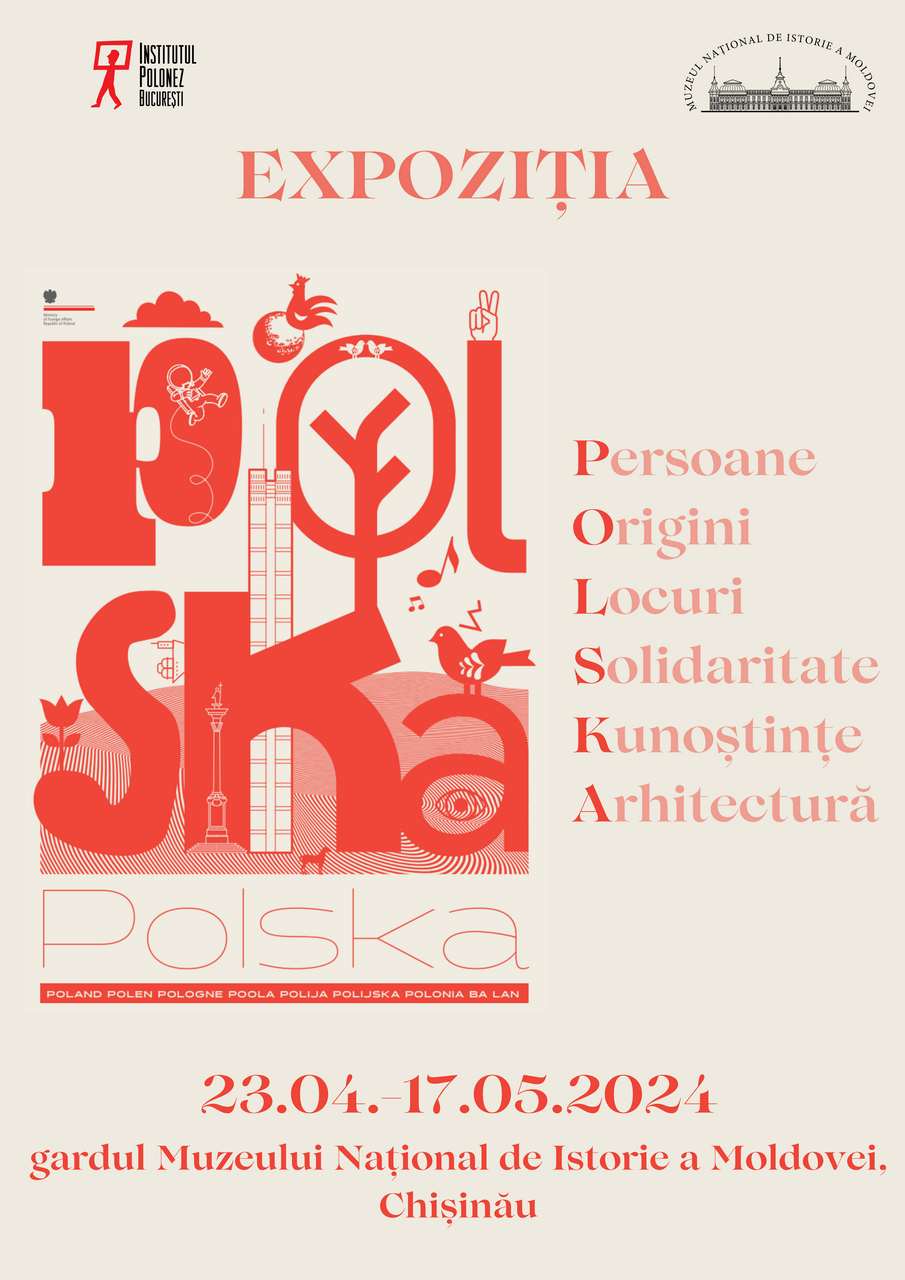 POLSKA - People, Origins, Places, Solidarity, Knowledge and, of course, Architecture. The latest exhibition made by the Polish Institute in Bucharest in the Romanian version helps you get to know our country in brief. We chose Chisinau to present it for the first time. The exhibition will be on the fence of the National Museum of History of Moldova from April 23 to May 17, 2024.
POLSKA - People, Origins, Places, Solidarity, Knowledge and, of course, Architecture. The latest exhibition made by the Polish Institute in Bucharest in the Romanian version helps you get to know our country in brief. We chose Chisinau to present it for the first time. The exhibition will be on the fence of the National Museum of History of Moldova from April 23 to May 17, 2024.
The exhibition is divided into six thematic blocks. Each of them tells interesting stories about people, history, landscapes, science, architecture and solidarity. The last word is particularly emphasized because here we also have Solidarity - written with a capital letter. For many Poles, solidarity is fundamental, and Solidarity is one of the most important reasons for their pride. Such reasons for pride will turn out to be even more!
From the exhibition you will be able to find out, among other things: What is the name of the person who discovered that the Earth revolves around the Sun?; Who was the only woman to win two Nobel Prizes?; Who became the "father of world electronics" after inventing the method of growing single crystals?; What is the name of the inventor who laid the foundations of the world oil industry?; Who was the first woman to climb K2, the most dangerous mountain on the planet?; Who was the first woman to reach the top of K2, the most dangerous mountain in the world?; What are some of the most important dates in Polish history and what happened then?; What kind of landscapes does Poland have?
The answers to all these questions can be found in our exhibition. Moreover, you will learn many less obvious things about the achievements of Polish science, about the achievements of Polish researchers or the diversity of Polish architecture. Poland is a country of contrasts, and everyone will definitely find something to their liking. It only takes a little curiosity to embark on a journey without moving too far!
The exhibition "POLSKA" can be seen between April 23 - May 17, 2024, on the fence of the National Museum of History of Moldova, Chisinau, 31 August 1989 street, 121A.
 31 August 1989 St., 121 A, MD 2012, Chisinau, Republic of Moldova
31 August 1989 St., 121 A, MD 2012, Chisinau, Republic of Moldova























































